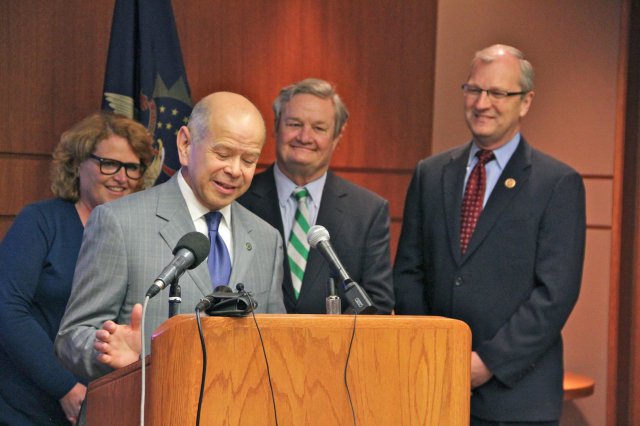The FAA aims to delegate authority to the six national unmanned aircraft system (UAS) test ranges it has chosen to issue their own experimental airworthiness certificates to manufacturers to test fly aircraft. The North Dakota test range, which planned to begin operations this week as the first range to receive an FAA certificate of authorization (COA), expects to eventually have two designated airworthiness representatives.
“The FAA tells us that the test sites are going to be the only places where you can come and get your aircraft certified in an experimental class category to begin with,” Robert Becklund, executive director of the Northern Plains Unmanned Systems Authority, told AIN. “This is a place where people can come and fly and get hours on their airplanes under the scrutiny and approval of the FAA and have those hours and procedures count toward an ultimate certification either in the experimental or restricted or other category to be developed. Eventually, they can get their airplane certified for commercial use—that’s what everybody wants.”
Currently, civil applicants must obtain a special airworthiness certificate in the experimental category from the FAA to fly an unmanned aircraft under certain conditions to conduct research, crew training or market surveys for prospective customers. The certification does not allow them to fly the UAS for compensation. The six national test ranges that Congress required in the 2012 FAA reauthorization legislation could provide an avenue for UAS manufacturers to eventually gain full type certification and airworthiness approval of their designs once the FAA establishes design and operational standards.
On December 30, the FAA named universities and other public entities in Alaska, Nevada, New York, North Dakota, Texas and Virginia to operate the six test ranges at their own expense. In a briefing for RTCA Special Committee 228 (SC-228) in late February, Jim Williams, manager of the FAA’s UAS integration office, said the agency’s “long-term vision is for the ranges to be delegated the authority to issue experimental airworthiness certificates” in their respective jurisdictions to help facilitate approvals. The FAA would be “one step removed from approving the (UAS) operations,” he explained. “Once we achieve this level of delegation, we’ll resort to an annual audit” of the test ranges. SC-228 is an industry and government committee developing standards for UAS “detect and avoid” and command and control functions.
In the 2012 reauthorization act, Congress required that a first test range begin operating within 180 days of being established, a date the FAA interpreted as June 28. Becklund, a former colonel and F-16 wing commander in the North Dakota Air National Guard, said the state helped the FAA beat that deadline by drawing on the UASexperience of the University of North Dakota. The university’s school of Aerospace Sciences has partnered with the Grand Forks Sheriff’s Department to fly the Draganflyer quadcopter under FAA authorization—the same vehicle for which the FAAgranted North Dakota a two-year COA on April 21. North Dakota State University (NDSU) will conduct the first flights at the test range to evaluate the Draganflyer for “precision agriculture,” but its preferred vehicle is the fixed-wing Trimble UX5, Becklund said.
“The FAA only had 180 days (after test site selection) to get one of these test sites operational, and we know that it takes months to get a new COA to fly,” he said. “We thought, and probably rightly so, that if we went for the Trimble right away, the COAwould take too long and we would risk not being able to meet the FAA’s timeline to fly.”NDSU’s plan is to transition from the Draganflyer to the UX5, once the test range obtains a COA for the latter aircraft, he said.
Source” AIN Online


UND is not the first UAS Flight Test Center. New Mexico State University Physical Science Laboratory, has been operating a UAS Flight Test Center since 2007. It still has the only FAA approved UAS Airworthiness Assessment program at this time.